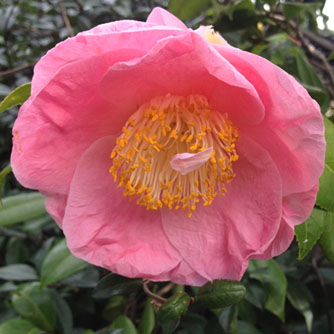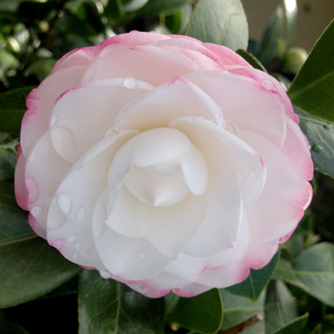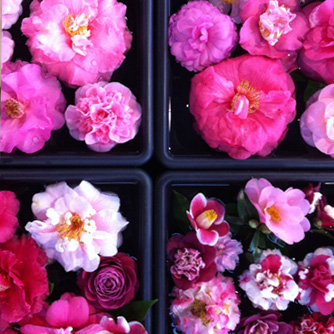Camellias
BackCamellias are one of those reliable shrubs which deserve a place in most gardens. They have lustrous deep green leaves and produce stunning blooms. With some clever selection of varieties you can have blooms from autumn to spring. No excuses for not having colour through winter now!
Camellia Types
Whilst there are over 300 different camellia species and many more cultivars there are really only three main groups which are commonly grown in Australian gardens:
Sasanqua
The sasanquas are the first to flower from mid autumn and into mid winter. They generally have smaller leaves and small to mid-sized flowers. Flowering is still very impressive so don’t be put off by that description. Sasanquas are the most versatile of the camellias as they are the fastest growing and make great hedges as well as specimen shrubs. They are also the most heat and sun tolerant.
Japonica
Japonicas flower later from early winter and into early spring. They tend to be slower growers and need protection from hot summer weather. However they’re worth the extra care as their flowers are larger and more decadent than sasanquas.

Pink camellia bloom
Reticulata
Not as commonly grown as the previous two but reticulatas are worth trying because they produce the biggest flowers of all from late winter into spring. Flowers can be up to 15cm wide with some varieties! Reticulatas produce more upright growth with larger leaves and an open habit.
By the way did you know that tea comes from a camellia? It’s the tips of new growth on Camellia sinensis that is picked and processed to be turned into tea.
Growing Conditions for Camellias
To get the best out of your camellias there are a few basic things they need. They prefer rich moist soil that is slightly acidic and contains plenty of organic material. Soil must also be free draining as they will not tolerate water logging. Use gypsum in heavy soil to help break up the clay and improve drainage.
Most prefer part shade and shelter from summer heat. Sasanquas are more tolerant of hotter weather but only once established so look after new plants in their first year or two.
Mulch well around all camellias to help retain soil moisture and protect their shallow roots. It’s also another way of adding organic matter.

It's easy to see why people love camellias with their elegant flowers
Fertilising Camellias
Camellias are fairly hungry plants and will appreciate being fed several times throughout the year. Key feeding times are autumn as buds are developing and in spring once flowering has finished and they are about to put on new growth. Feed with things like manure, compost or a Certified Organic fertiliser like Rooster Booster as all will add nutrients and organic matter to the soil. Liquid applications of OCP eco-aminogro and OCP eco-seaweed are particularly beneficial when the plants are most active (flowering and during their growth spurt) when they need some extra kick.
Don’t be too hung up about the need to buy a special camellia fertiliser. Your plants will thrive on the above mentioned fertilisers and you don’t have to clutter up your garden shed or garage with so many different products that you only use in small quantities. Keep it simple and enjoyable we say!
Pruning Camellias
One of the great things about camellias is that they don’t need pruning. Left alone they’ll happily develop into nice shaped shrubs and reliably flower year after year.

Mixed camellia blooms highlighting the huge variety available
If however yours has grown too large or you simply want to maintain a formal shape then camellias will happily submit to a haircut no problem. The best time to prune is after flowering finishes as this is when most camellias put on a growth spurt. Of course you can prune at other times of the year but you may be sacrificing some flowers. Avoid any major pruning during summer as the strong sunlight may burn inner branches which aren’t used to that much light.
Pest & Disease Problems of Camellias
Camellias are pretty robust plants but are commonly attacked by mites and scale. Both can be controlled organic insecticides.
Camellias will quickly succumb to root rot diseases, like phytophthora, if they don’t have good drainage. Plants look like they are thirsty with leaves quickly turning brown and usually clinging to the branches. Additional watering doesn’t fix the problem and plants usually die in a short period of time. Prevention is the best approach by improving drainage issues before planting a camellia.
Flower buds, especially on the larger double flowering varieties, may develop balling. This is where the petals stick together, buds brown off and then fail to open. It is caused by morning sunlight hitting buds which are still wet from dew or frost. If you have a variety which exhibits this behaviour then consider moving the plant so it doesn’t get early morning sun.

Yellow blooms from the rarely seen Camellia nitidissima


